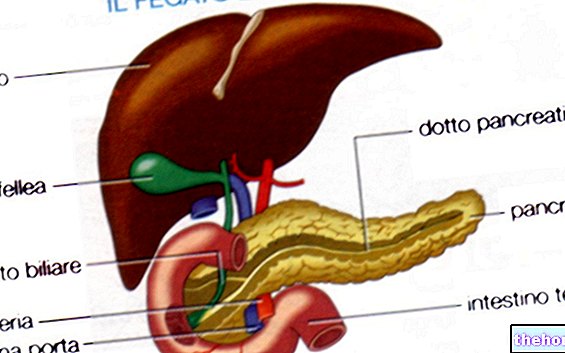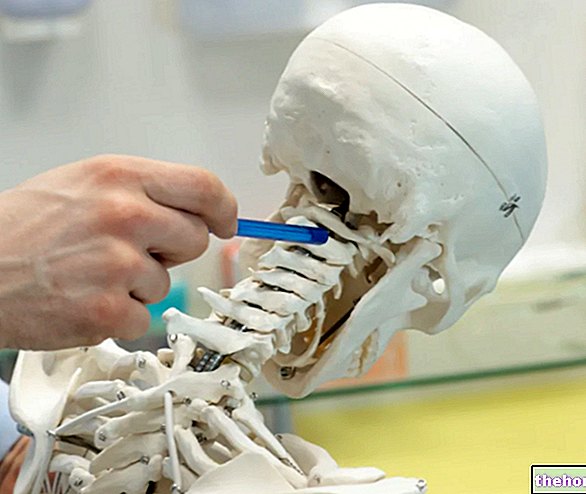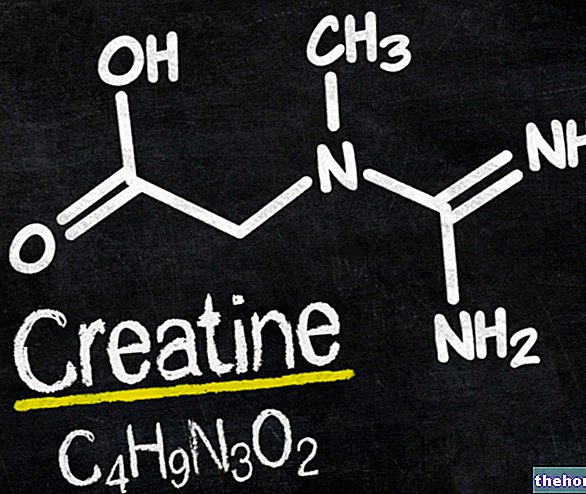Blood capillaries are responsible for metabolic exchanges between blood and interstitial fluid (a fluid that surrounds cells). These small vessels have extremely thin walls that allow the continuous passage, in both directions, of gases, nutrients and metabolites. In order for these exchanges to take place, it is important that the blood stream travels them at low speed and that its pressure, not excessive, is kept within rather narrow ranges.
The fundamental characteristics of the capillaries are therefore the reduced diameter (from 5-10 µm, sufficient for the passage of red blood cells one at a time in single file, up to 30 µm), the thinness of the walls, the low hydrostatic pressure (35-40 mm Hg at the arterial extremity - 15-20 at the venous extremity) and the reduced speed of the blood flow that passes through them (1 mm / second).
The capillary walls, unlike the venous and arterial ones, are not constituted by three concentric tunics, but by a single layer of flattened endothelial cells that rests on a basement membrane; the capillary wall is therefore devoid of muscle, elastic and fibrous fibers. This morphological peculiarity has the purpose of facilitating the exchange of substances with the interstitial fluid. On the other hand, many capillaries are associated with cells, called pericytes, which regulate the permeability of the endothelium, opposing these passages; the greater the number of pericytes and the lower the capillary permeability. It is not by chance, therefore, that pericytes are particularly abundant in the central nervous system, where they contribute to the formation of the blood brain barrier.
Three types of capillaries are identifiable in the human circulatory system:
Continuous capillaries: they are so called because their cells form a wall devoid of important spaces and interruptions. Even if the endothelial cells are joined by tight junctions, there are still small spaces that give the capillary a certain permeability to water and solutes, but little to proteins. Continuous capillaries are found mainly in the central and peripheral nervous system, in muscle tissue, in the lungs and in the skin; are the most common.
Fenestrated or discontinuous capillaries: they have pores of 80-100 nm in their wall, which in reality are not completely open but subtended by a thin diaphragm (a plasma sheet probably used to control the interchange between capillary and interstitium). in the endocrine glands, in the pancreas, in the renal glomerulus (where the pores have no diaphragm) and in the intestine, where the windows increase the exchange capacity of endothelial cells.
Sinusoidal capillaries: they are the most permeable of the three, because their very large endothelial wall has few junctions and large intercellular spaces. The endothelium and basement membrane are discontinuous and this facilitates exchanges between blood and tissue. They are found in the liver, spleen, bone marrow, lymphoid organs and some endocrine glands, where a high permeability to proteins and large molecules.
In the human body there are approximately 2 billion capillaries, which together cover a length of about 80,000 km and an exchange surface of about 6300 m2 (the equivalent of two football fields).
The capillaries are divided into an arterial portion, which carries blood rich in nutrients and oxygen, and a venous portion, which collects the waste blood from the previous one (in the meantime loaded with carbon dioxide and waste substances).
At the tissue level, the capillaries tend to form intertwined networks called "capillary beds", while the flow that crosses them is called microcirculation. At this level, the terminal arteriole continues with a metarteriole, a sort of direct passage channel to the post capillary venule. In turn, the so-called true capillaries branch off from each metarteriole, which intertwine with each other to form the aforementioned capillary bed ( for each bed, in relation to the perfused organ, there are from ten to a hundred real capillaries).
At the point of origin of the true capillaries there is a ring of smooth muscle fibers, the "precapillary sphincter", which surrounds it. This sphincter acts as a valve, regulating the flow of blood in the microcirculatory bed; consequently, when the precapillary sphincters are contracted, the flow occurs exclusively through the metarterium duct of the main vessel; vice versa, when the sphincters are relaxed the blood flows into the capillaries and the tissue is abundantly perfused. Obviously, these are boundary conditions, since in most cases there will be an open portion and a closed portion. Therefore, the true capillary can be closed or open, while the metarteriole, being a preferential vessel, is always open (since it lacks sufficient musculature to act as a sphincter). As such, the metarteriole can bypass capillaries and direct blood directly into the venous circulation; this channel also allows the passage of white blood cells from the arterial to the venous circulation (otherwise prevented by the reduced capillary caliber).

The amount of blood that enters a capillary bed is subject to intrinsic control, linked to the stretching of the vessel, and to local stimuli (biochemical signals, such as the partial pressure of oxygen, carbon dioxide and the presence of vasodilator-vasoconstrictor signals ). Depending on the condition, the bed is either bypassed or fully perfused.
The capillary bed often assumes different shapes and characteristics from one organ to another, with differences in the number of channels, in the density of the meshes and in the permeability of the wall; the capillary networks of the nerve centers, glands and pulmonary alveoli are particularly developed. The capillary density of a given tissue is in fact directly proportional to the metabolic activity of its cells, which leads to a greater demand for blood.
Other articles on "Capillaries"
- Physiology of the capillary circulation
- Health of the capillaries
- Capillary fragility




























